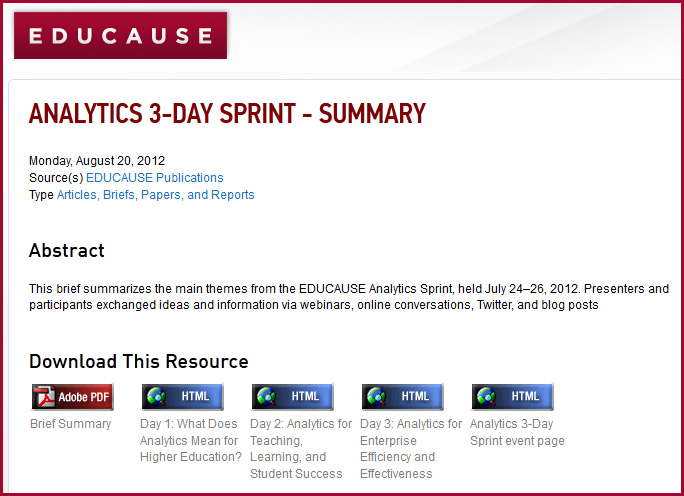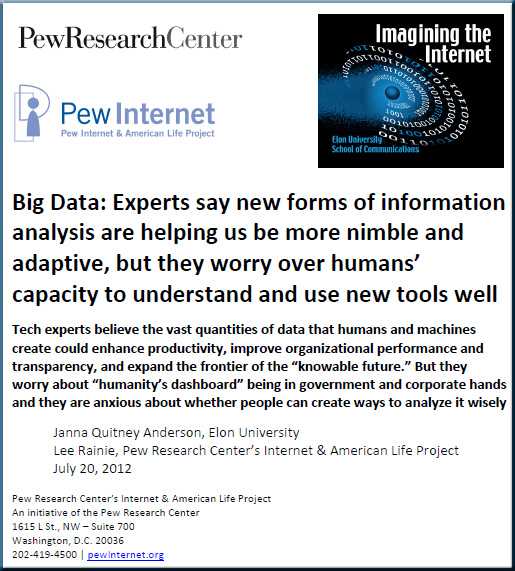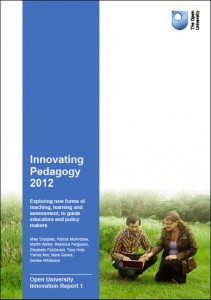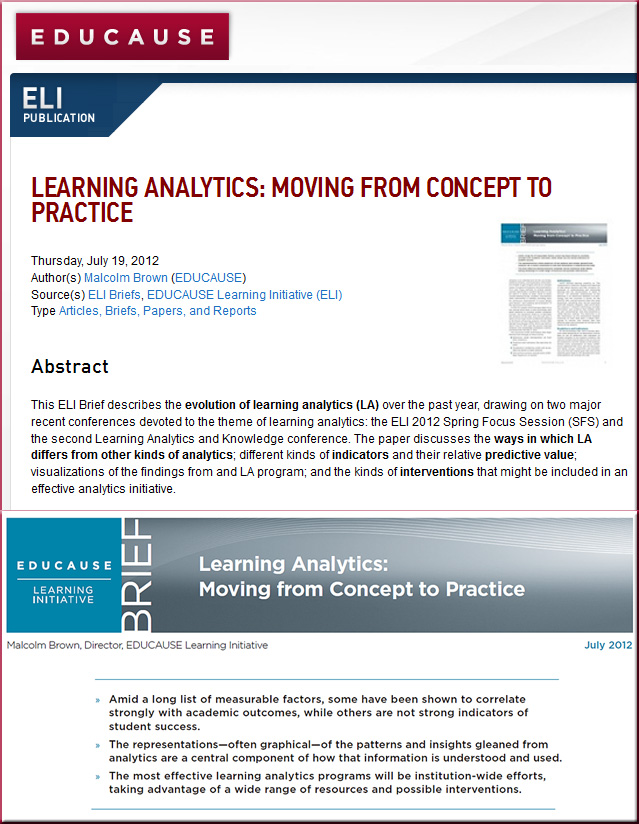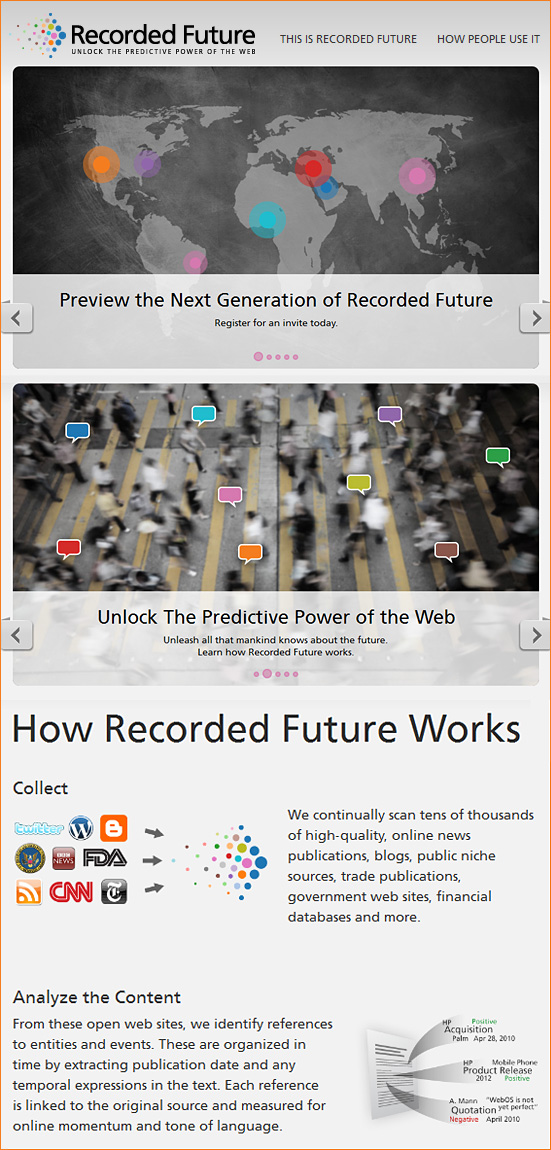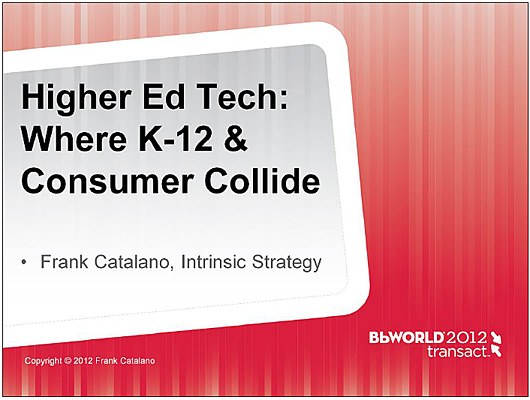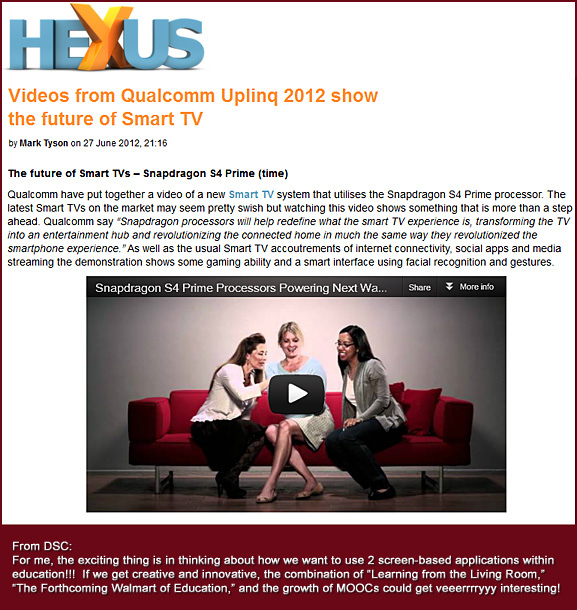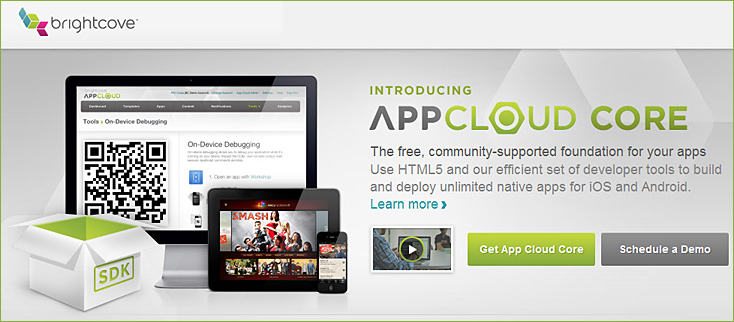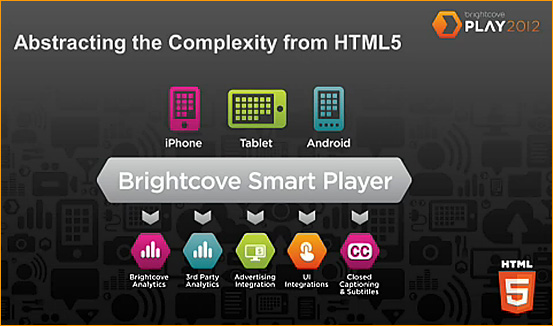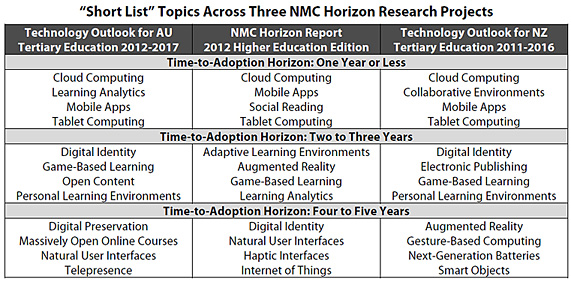Google’s answer to Siri thinks ahead — from technologyreview.com by Tom Simonite
The company’s data stockpile and investment in AI means a smartphone helper that answers queries before you even ask them.
Who’s reading your research? Academia.edu offers an analytics dashboard for scholars — from hackeducation.com by Audrey Watters
Excerpt:
Academia.edu, a social network for scholars, is unveiling a new feature today that its founder Richard Price hopes will help address part of the “credit gap” for research. Academia.edu allows users to upload and share their research papers, and the site is launching its Analytics Dashboard for Scientists today that Price says will let scholars see the “real-time impact” of their work.
Sharples, M., McAndrew, P., Weller, M., Ferguson, R., FitzGerald, E., Hirst, T., Mor, Y., Gaved, M. and Whitelock, D. (2012). Innovating Pedagogy 2012: Open University Innovation Report 1. Milton Keynes: The Open University.
.
Exploring new forms of teaching, learning and assessment, to guide educators and policy makers
Contents
- Executive summary 3
- Introduction 6
- New pedagogy for e-books
Innovative ways of teaching and learning with next-generation e-books 8 - Publisher-led short courses
Publishers producing commercial short courses for leisure and professional development 11 - Assessment for learning
Assessment that supports the learning process through diagnostic feedback 13 - Badges to accredit learning
Open framework for gaining recognition of skills and achievements 16 - MOOCs
Massive open online courses 19 - Rebirth of academic publishing
New forms of open scholarly publishing 21 - Seamless learning
Connecting learning across settings, technologies and activities 24 - Learning analytics
Data-driven analysis of learning activities and environments 27 - Personal inquiry learning
Learning through collaborative inquiry and active investigation 30 - Rhizomatic learning
Knowledge constructed by self-aware communities adapting to environmental conditions 33
Videos from Qualcomm Uplinq 2012 show the future of Smart TV
— from hexus.net by Mark Tyson
Excerpt:
Here are the feature highlights of these “redefined” Smart TVs:
- Console quality gaming
- Concurrency of apps
- Miracast wireless technology allowing smartphone and tablet screens to partake in multi-screen interactivity
- Personalisation and facial recognition
- Gestures
- HD picture quality
- HD video calling
From DSC:
…and add to that list the power of customized learning and analytics!
From DSC:
As Brian Crosby points out in the title of his blog — “Learning is Messy.”
There is no silver bullet in the world of education that can be used to effectively teach everyone. In fact, if you were to get 100 instructional designers/teachers/professors/instructors/trainers in the same room, you will not be able to find anything close to a strong agreement on what constitutes the best and most effective learning theory as well as the practical implementations of applying that learning theory (even if we were to be talking about the same age range of students). In my Master’s work, I was looking for that silver bullet…but I never found one.
It is very difficult for a professor or a teacher to deliver truly personalized/customized learning to each student in their classroom:
- How can a teacher consistently know and remember what motivates each particular student?
- Because so much of learning depends upon prior learning, what “hooks” exist — per student — that he/she can use to hang new information on?
- Then, what’s the most effective method of delivering the content for each particular student that might shift the content from their working memories to their long-term memories? (And in the process, do so in a way that develops a love for learning that will serve the student well over his lifetime)
- What’s the best way to assess the learning for each student?
- Which students cognitive loads are being eaten up due to the nervousness around being assessed?
- What are the best methods of passing along those learnings onto the students’ future teachers’ for the students’ benefit?
In my estimation, the way we have things setup throughout most K-16 education, this is an impossible task. When there’s typically only 1-2 teachers trying to teach to 20-30 students at a time, how can this type of personalized instruction occur?
However, I believe digital learning and its surrounding tools/ecosystems hold enormous promise for delivering truly customized/personalized learning opportunities. Such technologies will be able to learn where a student is at, how to motivate them, how fast to push them, and how they best progress through a type of content. Such tools will provide real-time, learning-related, diagnostic dashboards for professors or teachers to leverage in order to guide and optimize a student’s education.
.

.
So I believe that the promise is there for delivering truly customized/personalized learning opportunities available 24x7x365 — even though we aren’t completely there yet. But think of the power a teacher would have if he or she had IBM’s Watson AI-based analysis on each student at their disposal! A “guide on the side” using such diagnostic tools could be a ***potent*** ally for a student.*
As such, I see innovative approaches continuing to come to fruition that will harness the power of serious games, analytics, web-based learner profiles, and multimedia-based/interactive learning content. Eventually, a piece of this type of personalized education will enter in via the Smart/Connected TVs of our living rooms…but that’s a post I’m building out for another day in the near future.
.
*Another hope I have here is that such technologies will
enable students to identify and pursue their passions.
Some items that reinforced this notion for me include:
The key link from Bloom (1913-1999) one e-learning paper you must read plus his taxonomy of learning — an excellent item from Donald Clark Plan B (also see Donald’s archives for postings re: 50 top learning theorists)
The 2 Sigma Problem: The Search for Methods of Group Instruction as Effective as One-to-One Tutoring
Benjamin Bloom
University of Chicago | Northwestern University
Excerpt:
Most striking were the differences in final achievement measures under the three conditions. Using the standard deviation (sigma) or the control (conventional) class, it was typically found that the average student under tutoring was about two standard deviations above the average of the control class (the average tutored student was above 98% of the students in the control class). The average student under mastery learning was about one standard deviation above the average of the control class(the average mastery learning student was above 84% of the students in the control class).
Two key items from EdNet Insight’s Anne Wujcik:
Mapping a Personalized Learning Journey – K-12 Students and Parents Connect the Dots with Digital Learning — from Project Tomorrow
Personalizing Learning in 2012 — The Student & Parent Point of View [infographic] — from Project Tomorrow
Excerpt from Anne’s posting:
This first report focuses on how today’s students are personalizing their own learning, and how their parents are supporting this effort. That personalization centers around three student desires: including how students seek out resources that are digitally-rich, untethered and socially-based. The report share the unfiltered views of K-12 students and parents on these key trends and documents their aspirations for fully leveraging the technologies supporting these trends to transform their learning lives.









